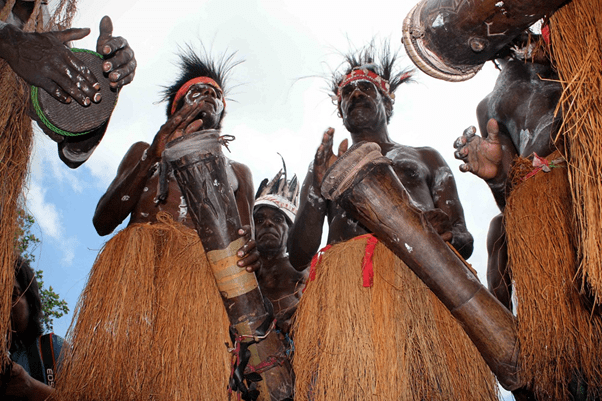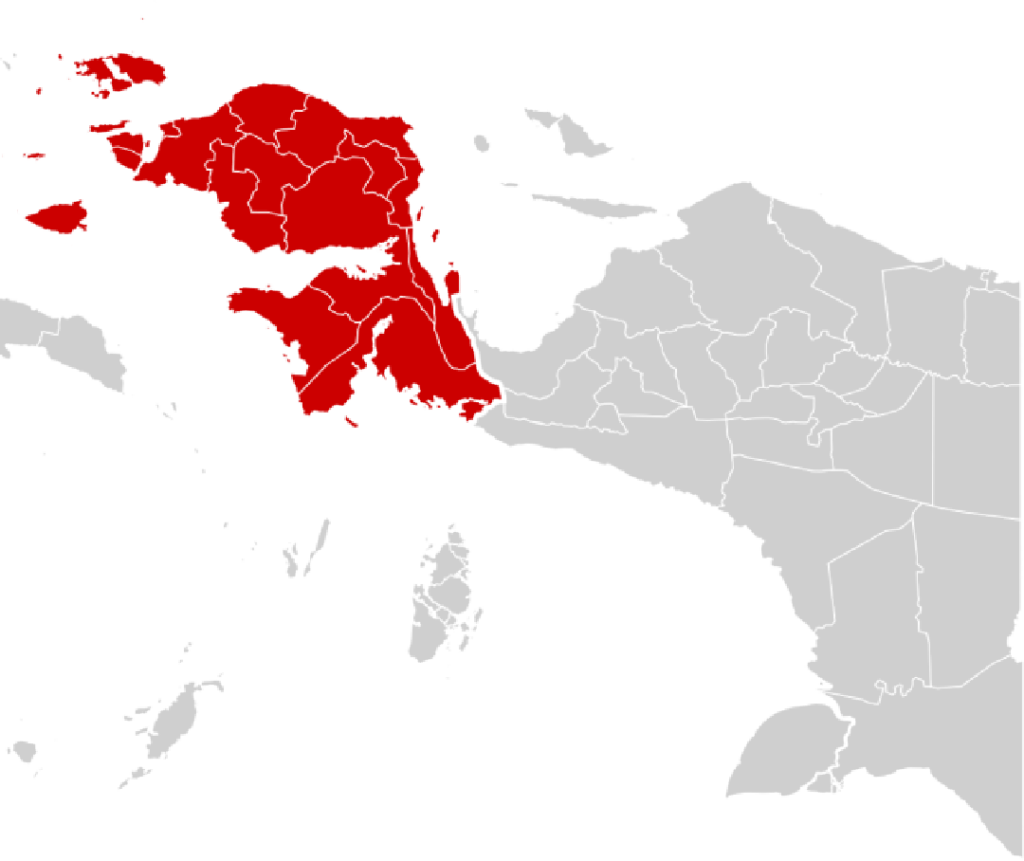“In the silence of the night,
the weeds dance to my drum;
According to my Tifa,
The Pala tree the virgin’s body becomes alive until dawn arrives.”
If this is indeed the poem by Chairil Anwar titled ‘The Story of Girl, Dien Tamaela’, who is Dien Tamaela? So far, no one knows much about her except Chairil Anwar himself.
But we won’t delve into Dien Tamaela or Chairil Anwar. Instead, we will explore the artistic footprints of Papua that Chairil mentions in his poetry. Tifa, what is Tifa?
Tifa is a traditional musical instrument unique to Indonesia’s eastern regions, particularly Maluku and Papua. Tifa resembles a drum and is made of wood with a hole in the middle. It is then covered with animal skin, typically deer. When played by striking it, it produces a beautiful sound.
Tifa comes in various types, such as Jekir, Dasar, Potong, Jekir Pototng, and Bas. The shape of the Tifa instrument is often made based on the region of its origin. The body of the instrument is made of wood, covered with rattan as a binding, and has a unique shape depending on the region. Tifa is used not only in war dances but also in various traditional dances like the Lenso dance from Maluku, which is also accompanied by Totobuang, the traditional dance of the Suku Asmat, and the Gatsi dance.
In Maluku, Tifa is known as Tahitoe and is commonly used in the central regions of Maluku. In Pulau Aru, Tifa is called Titir.
The origin of Tifa can be traced back to two Papuan brothers named Fraimun and Saran Bayar. They left their flooded village and settled in Wamp Ender, North Biak. During their nocturnal hunt, they stumbled upon a tree called Opsur, which produces a sound in the middle of the forest.
The next day, they found that the tree was home to various animals, such as bees, snakes, and other creatures. They decided to cut down the tree and remove its core using a long iron rod with a sharp end. They then made the hollowed-out tree look like a pipe and covered the remaining holes with Soa-soa skin to seal them.
In East Indonesia, Tifa is used as a musical instrument to accompany rituals. It is also an essential part of traditional rituals, particularly those of the Papuan and Malukan communities. Tifa is a rhythmic musical instrument that is crucial for creating the sound that enhances the ritual’s sacred atmosphere. It must also be synchronized with the dance and song in the ritual, as the sound produced will influence the dance’s movements.
Interestingly, Tifa can only be played by adult men. They are considered strong leaders and are responsible for playing the ritual musical instrument. Not everyone can play Tifa; there are specific procedures to follow in the ritual to obtain permission from the village head or the local community. Tifa must be played during pregnancy, childbirth, when a child reaches adulthood, and during death.
In summary, Tifa was discovered in Papua and Maluku. However, the Papuan people are particularly fond of Tifa, as evidenced by the various traditional rituals that require its use. The difference between Tifa in Papua and Maluku is the peg on the side. Tifa from Papua has a side peg, while Tifa from Maluku does not. There are also four types of Tifa: Jekir, Potong, Dasar, and Bas, each determined by the region and its unique characteristics.
So, the correlation between Chairil’s poetry and Tifa itself is he trying to tell the readers about how sacred is his love for the girl Dien Tamaela. Apparently, Dien is truly an East Indonesian girl who made him write such deep and beautiful poetry.
So, have you ever seen or heard Tifa in person or online?


